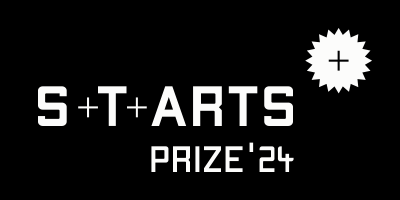2021 S+T+ARTS Prize Jury
All submissions are judged by a jury to decide on the two prize-winning projects and up to ten honorary mentions.
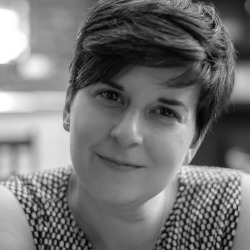
Alexandra Deschamps-Sonsino (UK) is an Internet of things author, consultant, public speaker and entrepreneur with a background in industrial and interaction design. She wrote ‘Smarter Homes: how technology will change your home life’ and ‘Creating a Culture of Innovation’ (Apress, 2018-2020), was the first UK distributor of the Arduino and is the founder of the Good Night Lamp which is in the permanent collection of the London Design Museum. She was named 1st in a list of 100 Internet of Things Influencers (Postscapes, 2016), 2nd in Top 100 Internet of Things Thought Leaders (Onalytica, 2014).

Nicola Triscott PhD is a curator, researcher and writer, specializing in the intersections between art, science, technology and society. Since 2019, Nicola has been Director/CEO of FACT (Centre for Film, Art & Creative Technology) in Liverpool, UK, where she curated the exhibition And Say the Animal Responded? in 2020. Previously, she was the founding Artistic Director/CEO of Arts Catalyst (from 1994 to 2019) and Principal Research Fellow at University of Westminster (2017-19). Over 25 years, Nicola built Arts Catalyst into one of the UK’s most distinctive and respected art and research organisations, distinguished by ambitious artists’ commissions, including notable projects by Tomás Saraceno, Otolith Group, Ashok Sukumaran, Marko Peljhan, Ariel Guzik, and Critical Art Ensemble. Nicola lectures and publishes internationally.

Alexander Mankowsky (DE), born 1957 in Berlin, studied Social Science, Philosophy and Psychology at the ‘Freie Universität Berlin’. In 1989 he started working in the research institute of Daimler in Berlin. The multidisciplinary approach in the institute integrated a wide array of disciplines, from social sciences to artificial intelligence. His current working topics are Futures Studies, focussed on the ever changing culture of mobility, the interdependency of social and technological innovation and other aspects of envisioning paths into the future.
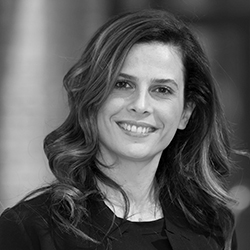
Francesca Bria (IT) is the President of the Italian National Innovation Fund, and Honorary Professor in the Institute for Innovation and Public Purpose at UCL in London. She is a Senior Adviser to the United Nation (UN-Habitat) on digital cities and digital rights. Francesca Bria is leading the DECODE project on data sovereignty in Europe, and is a member of the European Commission high level expert group Economic and Societal Impact of Research and Innovation (ESIR). Francesca has a PhD in Innovation and Entrepreneurship from Imperial College, London and MSc on Digital Economy from University of London, Birbeck. She has been teaching in several universities in the UK and Italy and she has advised Governments, public and private organizations on technology and innovation policy, and its socio-economic and environmental impact.

Fumi Yamazaki, Senior Marketing Manager, APAC, Niantic Japan. Fumi joined Niantic in February 2018, working on marketing for Ingress, Pokémon GO and Harry Potter: Wizards Unite, and Niantic Developer Platform in the APAC market. In 2010 she joined Google as Developer Relations country lead for Japan, then joined Google Social Impact team working on Google Crisis Response helping the community hit by natural disasters, and Civic Innovation working with the citizens to make the society a better place using technology, then moved to Google Advanced Technology and Projects team working on Project Soli creating radar-based gesture sensors and Project Jacquard developing interactive textile using conductive yarn, as program manager and developer relations manager. Prior to joining Google, she worked on corporate sales at Nippon Telegraph and Telephone corporation (NTT), Internet marketing research at Interscope, marketing, event management, new business development and investment at Digital Garage, DG Incubation and Technorati Japan.
2021 S+T+ARTS Prize Advisors
The advisors are renowned international consultants with expertise in this field. They recommend projects and encourage a wide range of potential participants to submit proposals. In addition, they ensure a balance in terms of gender and geographical origin of the participants.
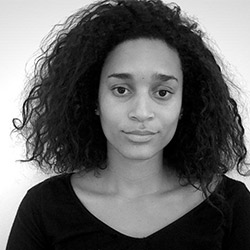
Amanda Masha Caminals (ES) is co-director and curator of the Mutant Institute of Environmental Narratives (IMNA), the laboratory of Matadero Madrid that fosters artistic practices in connection with journalism, science and technology as a response to the challenges of the climate crisis. Previous to that, she directed the CITY STATION of the Environmental Health Clinic by artist Natalie Jeremijenko at the Centre for Contemporary Culture of Barcelona (CCCB). She is founder of the organization Translocalia, a network of artists, curators and designers to plan for the future through art. She holds a BA in Humanities, a Degree in History of Art and an MA Hons in Curating Contemporary Art from the Royal College of Art in London.
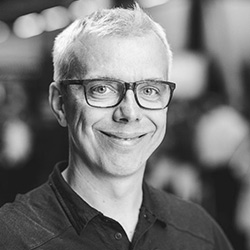
Andy Cotgreave is co-author of The Big Book of Dashboards, and Technical Evangelist at Tableau. He is the host of If Data Could Talk, co-host of Chart Chat and columnist for Information Age. He is also on the 2021 dataIQ Top 100 most influential people in data. With over 15 years’ experience in the industry, he has inspired thousands of people with technical advice and ideas on how to identify trends in visual analytics and develop their own data-discovery skills. Keep in touch with Andy by subscribing to his Sweet Spot newsletter: curated stories of how data intersects with the world. Or follow him on Twitter and LinkedIn.

Jennifer Heier is an Industrial Designer at heart who’s specialized in User and Customer Research. She studied Industrial Design in Darmstadt (Diploma), did her Bachelor of Arts in San Francisco and her Master of Science in User Research in Edinburgh. She loves to work in a diverse and cross disciplinary team close to new technology topics contributing her passion for human-centric-innovation and continuously questioning the status quo. She is currently working at Siemens digital industries data lab as Head of UX driven AI, bringing the human factor into the B2B context. Besides, she is doing her PhD at the Bauhaus University in Weimar investigating how the creative community should and could positively influence AI development. She believes in the power of her profession to contribute and add value to the challenges, as well as opportunities, of the digital age.
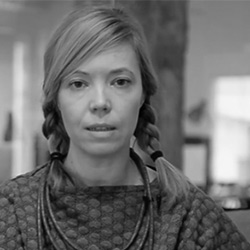
Nana Radenković is one of the co-founders of Nova Iskra, where she is focused on creating mentoring programs, trainings and workshops for individuals, organizations and companies interested in taking an active role in the processes of transformation – not only of their projects and businesses, but also through creation of new ways in which we could learn, live and work in the future. She holds MA in Management in Culture, Interculturalism and Mediation in the Balkans from the University of the Arts Belgrade, and has extensive experience in working in the private, public and civil sectors. She is a professor at the Faculty of Media and Communications in Belgrade, and a mentor within the Nelt Educational Program and Creative Mentorship.
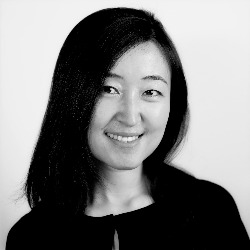
Lining Yao (CN) Lining Yao is an Assistant Professor of Human-Computer Interaction Institute (HCII) at Carnegie Mellon University, School of Computer Science, directing the Morphing Matter Lab (https://morphingmatter.cs.cmu.edu/). Morphing Matter Lab develops materials, tools, and applications of adaptive, dynamic and intelligent morphing matter from nano to macro scales. Research often combines material science, computational fabrication, creative art and design practices. Lining and her lab work anti-disciplinarily, publishing and exhibiting across science, engineering, design and art. Lining gained her Ph.D. at MIT Media Lab in 2017.
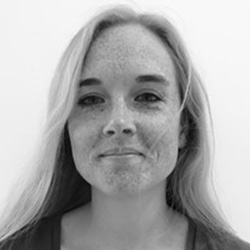
Fiona Zisch, Architect and experimental psychologist with experience in film production design and designing for extreme environments – Fiona Zisch researches the cognition, experience, and reciprocity of architectural space, bodies, and movement. She works between the Institute of Behavioural Neuroscience at UCL and the Bartlett School of Architecture. She also teaches undergraduate Experimental Psychology at UCL. Fiona speaks at and organises international architecture and neuroscience conferences and festivals, has collaborated on a number of multidisciplinary research projects, and acts as a consultant for architecture and technology companies. She has published papers and book chapters in an array of research fields.

Patrick van der Smagt is director of AI research at Volkswagen Group, and leads its Machine Learning Research Lab in Munich (argmax.ai). The lab focuses on probabilistic deep learning for time series modelling, optimal control, robotics, and quantum machine learning. He is also a faculty member of the LMU Graduate School of Systemic Neurosciences and research professor at Eötvös Loránd University Budapest. He is the founding head of a European industry initiative on certification of ethics in AI applications (etami). Patrick previously directed a lab as professor for machine learning and biomimetic robotics at the Technical University of Munich, while leading the machine learning group at the research institute fortiss. he founded and headed the Assistive Robotics and Bionics Lab at the DLR Oberpfaffenhofen. Ages ago he did his PhD and MSc at Amsterdam’s universities on neural networks in robotics and vision. Besides publishing numerous papers and patents on machine learning, robotics, and motor control, he has won a number of awards, including the 2013 Helmholtz-Association Erwin Schrödinger Award, the 2014 King-Sun Fu Memorial Award, the 2013 Harvard Medical School/MGH Martin Research Prize, and best-paper awards at machine learning and robotics conferences and journals. He was founding chairman of a non-for-profit organisation for Assistive Robotics for tetraplegics and co-founder of various tech companies.
Making the Invisible Visible – Reflections on the Here-and-Now and the Soon-to-Be
Statement of the S+T+ARTS Prize ’21 Jury (Francesca Bria, Alexandra Deschamps-Sonsino, Alexander Mankowsky, Nicola Triscott, Fumi Yamazaki)
From a staggering 1,564 entries, 805 projects were directly submitted to S+T+ARTS Prize’21.
As a ‘new normal’ required the jury to gather virtually for the second time in the history of the prize, a spirit of hope colored the discussions as vaccination schemes had begun around the world. Settled into a year of remote work, jury members from time zones spanning across the world were able to get to know each other, collaborate, argue, and make their way as a group to a final selection. This was, of course, without the ambiance of Linz and the pleasures of face-to-face meals and conversations but with the obvious and important environmental benefits of meeting virtually. If the crisis has taught us anything, it’s that other crises will be coming along shortly, and we might as well learn to live with change.
This sense that everything is changing also permeated the projects submitted. Many of them addressed the important issues of today in Europe and around the world: social injustice and climate change. Some chose to approach our ever-changing present with hope while others took a more journalistic approach of documenting our present in creative ways. Technical ambitions were high and the interest in new materials, new techniques, and ways to instrument our world out of a crisis were omnipresent. For others, it was a question of using technology to amplify the cultural impact of shared public space. Applicants showed us the power of cross-disciplinary collaboration while still retaining a strong sense of purpose and identity as artists. Over 96 countries were represented this year, proving that the interest in STARTS is continuing to expand across borders and into a wide range of creative and technical communities.
The natural systems that we are part of, our agricultural futures, the built environment and the fragile state of privacy online were some of the themes that emerged strongly. In that sense, the projects the jury chose to highlight in both their nominations and the prizes were about reflecting on the now and the soon-to-be. The COVID-19 crisis may have tampered the desire to predict a far-flung future when so much is possible now, today. The need to demonstrate the technical capabilities of today was an important dynamic. Perhaps the applicants were tired of speculating and wanted a little more action. The jury responded accordingly, choosing to award the prizes to projects that made the invisible systems that surround us a little more visible, understandable, beautiful, and something we can all act on today.
This ‘can do’ spirit was omnipresent this year as the COVID-19 crisis gives us a chance to reflect on how we might respond to more diffuse, complex, and multi-layered crisis. As the STARTS prizewinners announcement coincides with a surge of hope for our immediate future, artists, designers, scientists, and technologists everywhere were clear in their message: this is just the beginning of a journey that requires new tools and new skills. It’s up to us to respond to their invitation not only across Europe but around the world.
Grand Prize – Artistic Exploration
Awarded for artistic exploration and art works where appropriation by the arts has a strong potential to influence or alter the use, deployment, or perception of technology.
Oceans in Transformation
Territorial Agency – John Palmesino and Ann-Sofi Rönnskog
Oceans in Transformation is a strong call to collaborate across disciplines to deepen our knowledge of the oceans and to act together to safeguard the future of our living ecosystems. Housed inside the Church of San Lorenzo in Venice, in a place that can remind us of the wonderful and fragile balance between man and nature, the collaborative platform Ocean Space presents the multimedia exhibition conceived by the collaboration between the architects of Territorial Agency, TBA21–Academy, and e-flux Architecture. The work is the outcome of a three-year multidisciplinary investigation and research project on the state of the oceans in transformation, linking science, arts, and politics, by producing shared images of the oceans, earth science and remote sensing datasets with data from satellites, GPS, AI, sonar scans, and climate models produced by different actors and research disciplines, revealing the magnitude of the impact of human activities on the oceans. The project makes visible what is ultimately at stake in the Anthropocene, which is the health of our aqueous planet, presenting rapid sea level rise and marine degradation. Intensive fishing, deep-sea mining, and various other activities represent dangerous anthropogenic pollution factors of the oceans that can irreversibly modify our ecologies. The project is a large-scale collaboration involving interaction with hundreds of scientists, research institutions, NGOs, environmental activists, policy makers, and artists. It brings together a group of Ocean Fellows and a rich program of digital initiatives and activities to broaden and deepen our knowledge of the Anthropocene ocean that can be accessed on the digital platform ocean-archive.org.
Grand Prize – Innovative Collaboration
Awarded for innovative collaboration between industry or technology and the arts (and the cultural and creative sectors in general) that opens new pathway for innovation.
Remix el Barrio, Food Waste Biomaterial Makers
Anastasia Pistofidou, Marion Real and The Remixers at Fab Lab Barcelona, IaaC
Remember the 19th century Arts & Crafts Movement? Remix el Barrio can be seen as translation of Arts & Crafts into our times, confronting well-known contemporary issues with manufacturing and consumption in our daily life. Remix El Barrio is a collective of designers who propose projects with food leftovers using artisan techniques and digital manufacturing. They collaborate with agents from the Poblenou neighborhood to promote a more local and circular ecosystem. In their manifesto they want to “promote artisan-manufacturing sites and designer/craftsman cooperatives in the development of short-loop products, creating direct synergies with neighborhood actors, facilitate the access and the rehabilitation of abandoned sites, support logistics, and partnerships between local actors.”
The jury was most impressed by the wide array of beautifully up-cycled products made from waste—ranging from dye colors made from avocado stones, bioplastics out of orange peel, soaps from used oil, or paper made of coffee peels. Their initiative, Organic Matters, explores the intersection between design, biology, chemistry, technology, material science, community, and self-sufficiency. It could be interpreted as a reformulation of the STARTS idea itself.
Honorary Mentions
A Lighter Delicacy
Sorawut Kittibanthorn
Food waste is a major concern around the world and has a major impact on climate change. It also flies in the face of global poverty, which is also on the rise again for the first time in 20 years. Sorawut Kittibanthorn wants us to rethink a common food by-product, chicken feathers, and put them back in the center of a meal. Rich in protein, they could easily be turned into a foodstuff that would rival soya, tempeh, and other similar by-products. Kittibanthorn challenges us by putting on a Michelin-star looking meal with the processed feathers at the center, inviting us to change our minds about what is waste and what is food. The project sits very well in a food landscape that is diversifying and where even dried insects are starting to feature more prominently. The impact of turning a waste by-product into a foodstuff could save the feathers from landfill, keep them out of our rivers, and in turn help feed others. These are all important and critical ideas that should travel far and wide, especially in our foodie circles.
Cloud Studies
Forensic Architecture
Cloud Studies propose a new and radical approach to investigate contemporary clouds, suggesting the need for an alternative cartography of critical zones. It is a video work that assembles eight recent investigations by Forensic Architecture under the common theme of toxic clouds in different geographical locations and local contexts—from chemical white phosphorus and glyphosate used in Gaza, tear gas used to disperse crowd protests in Hong Kong, methane in Argentina, or chlorine used in the Syrian town of Douma, and arson used to eradicate Indonesian forests for industrial plantations. In the turbulent and fragile year of the COVID-19 pandemic, where the relationship between nature, ourselves, and technology appears dangerously unbalanced, Cloud Studies reflects on the global atmosphere dominated by toxic clouds that colonizes the air we breathe and shapes our environment and our perception, prompting collective resistance and protests. Clouds are also a metaphor for the fragility and porosity of borders, since we are all connected and close, breathing the same toxic air. It is clearly denouncing how state and corporate powers continuously mobilize new types of clouds to control and manipulate human behaviors and their environment. Toxic clouds colonize the air we breathe, leaving traces everywhere, and it is hard not to relate it to the infrastructural “clouds” that colonize our digital life today, amassing information and data that can be used and monopolized in various ways. Audio recordings and the audiovisual narrative, together with the essays and texts read by their authors are also made accessible in a virtual exhibition platform, providing more in-depth information for the audience: https://critical-zones.zkm.de/#!/detail:cloud-studies
Data Garden
Grow Your Own Cloud
Global energy consumption of data centers is a huge issue for the global environment. Data centers are emitting as much CO2 as the aviation industry, and these numbers are growing exponentially. Data Garden is an organism-based data center, a carbon negative data infrastructure that can store and retrieve data from the DNA of plants, using organisms that create its own energy. Through this project, the Grow Your Own Cloud team aims to build an organic cloud that emits oxygen rather than CO2. From speculative research working with local flower shops to be transformed as decentralized data centers, to working with researchers at the University of Washington, actually converting computational data such as JPGs and MP3s into DNA. Data Garden and its installation inspires the audience regarding how humans may be able to work with nature and data, creating regenerative data ecosystems.
ELEVENPLAY x Rhizomatiks “border 2021”
MIKIKO, Daito Manabe, Motoi Ishibashi, Takayuki Fujimoto, evala, ELEVENPLAY, Rhizomatiks
What is real and what is virtual? As technology advances, some technologies are capable of making such borders invisible. border 2021 is a project that challenges the audience with a highly immersive experience transforming the border of the virtual and the real world. With a combination of personal mobility device and VR-headset, the audience experiences an immersive performance art going back and forth between the fictional world of VR/AR and the real world brought back by the physical touches of dancers confusing various boundaries. Everything in this project moves, from physical objects, the audience on personal mobility devices, and dancers, all of which is programmed, choreographed, and performed extremely precisely. Coping with the post-COVID-19 era, the project also provides a unique online viewing experience enabling the viewers to select viewpoints of multiple perspectives such as a bird’s eye view of the entire venue, and the control screen of the controlling software. border 2021 impresses the audience with the artistic and technical quality of the implementation, the multidisciplinary collaboration, and innovative nature of how the project is pushing the boundaries of what people could perceive in the future as “real” and “virtual.”
mEat me
Theresa Schubert
Not since Lee Miller photographed a severed breast on a dinner plate in 1929 and Orlan’s performances of carnal art of the 1990s have we seen human flesh as food for thought. Veganism doesn’t seem too extreme compared to the impressive work of artist Theresa Schubert. Taking our obsession with meat, the realities of gene manipulation, and our food production realities, she really does make us eat hyper-locally. Her videos and photographs explain the process of turning a sample of her own blood cells into lab-grown meat. By treating the human body as just another food choice, her work puts us back into the animal kingdom and Nature where we belong. It’s bold and might even be shocking to some, but the reality is, if we treat our own bodies the way we treat the bodies of the animals that help us both to nourish us and to overcome disease, we might find commonalities instead of differences.
On View
Ania Catherine, Dejha Ti
In modern society, users are constantly exposed online to various addictive interfaces, surveillance, and data privacy, often not knowing what is actually going on. On View (2019) is an installation that allows the audience to interact with those interfaces in the virtual world, with no virtual layer, being exposed directly to that awkwardness that is usually hidden behind the online interactions. Through the installation, the audience is forced to experience, learn, and feel the weight of what is actually going on when they sign the Terms & Conditions online that they may not read, unaware that they may be signing up for facial detection and facial recognition. On View raises awareness of the issues such as privacy, data protection, data ethics, and surveillance capitalism, which are concerns often addressed in Europe with the GDPR.
Project Habitate
Yuning Chan, Tom Hartley, Yishan Qin
When we are talking about the Anthropocene with its destruction of the biosphere, then we imagine large mammals, whales or the Amazon forest. What is missing in our cultural imagery of nature, is the barely visible, in case of trees the profane: mosses, lichen, and fungi. In Project Habitate, the artists have created scientifically proven wearables which are ready to be accepted by mosses, lichen, and fungi. The wearer would be enabled to replace a tree as host. The original host is the ash tree: the jewelry mimics the ash tree’s bark texture, light level, porosity, and pH and leverages human movement to support guest species’ spore dispersal. The living wearable can be seen as an indicator of ecological-social connectivity, as a reminder that no species is an island. From the STARTS perspective, Project Habitate provides scientifically sound ideas on how the destructive aspects of the Anthropocene can be countered through the creation and application of materials that can serve as habitats for neglected species.
The Growing Pavilion
Company New Heroes / Biobased Creations (NL)
Biobased or recycled materials are often evaluated solely as replicas of today’s conventional one-way-ticket materials. Contemporary mainstream aesthetics reflect a production process in which the product itself can be endlessly replicated in sameness—but only until the resources are depleted. Nature shows a different approach, there is neither resource depletion, nor sameness. The Growing Pavilion communicates a future-proof approach to beauty, where everything is unique in texture and color. The walls are grown out of locally harvested plants and mycelium, forming a kind of organic skin instead of an evenly white wall. The creators have reinforced the new aesthetics of growing with the exhibition of unique pieces by Aniela Hoitink, Christien Meindertsma, Diana Scherer, Eric Klarenbeek, Martijn Straatman and HuisVeendam. The core idea of growing instead of manufacturing is seen as a very promising pathway into a sustainable future.
The Living Light
Nova Innova
Microbial Fuel Cell technology (MFC), the idea of using microbes to produce electricity, has been known since 1911, when Michael Cressé Potter made the subject public. In Pop Culture, the banana fed time machine was able to send mad scientists ’Back to the Future‘. But The Living Light is different—it is a practical approach to literally illuminate the mutual dependence between nature and mankind. The Living Light is about to implement Plant Microbial Fuel Cell technology in our day-to-day lives—reaching from your indoor plant providing light at home to illumination in urban parks, powered by the organisms in the soil. The Living Light is a beautifully crafted beacon into a future, where life itself can contribute to our civilization, replacing endless numbers of batteries. Especially interesting for STARTS is The Living Light as an eye opener for the engineers of the sensory based Internet of Things, where many small devices will need weak energy sources that cannot be maintained by a complicated energy network or batteries.
The Tides Within Us
Marshmallow Laser Feast, Fraunhofer MEVIS, Natan Sinigaglia
The Tides Within Us is a unique trip into the human body, following real blood flow heart data captured by an MR scanner that amplify our perception of the body and its boundaries. Where does the human body begin, and where does it end? What’s the relationship between humans and nature? An immersive scientific exploration with interactive screens that allow the audience to explore the fluidity of the human ecosystem, mapping the flow of oxygen through the cardiovascular system, thus challenging the boundary between our bodies and our environment, beyond the limit of our perception. This arts–science partnership between the Marshmallow Laser Feast (MLF) and pioneers in medical image computing Fraunhofer Institute for Digital Medicine MEVIS, shows that everything is connected and that we share a similar structure to nature. The expertise of Fraunhofer Institute in digital medicine and the MR-Lab research made possible the artistic exploration of MLF using scientific medical data sets and advanced capturing techniques at scale, to create a human 600 feet tall. In a moment of strong evolution and transformation of digital medicine, this work opens up our imagination and perception: at this scale, lungs look like trees, arteries like river deltas, and neural pathways like thunderstorms, opening novel ways of experiencing our bodies, and changing the way people learn and think about the body in relation to the environment. The Tides Within Us is an ongoing science–arts collaboration that will continue to evolve and expand.
Nominations
An Olfactory Biopolitics Nairobi
Coltrane McDowell
Constructing Connectivity
Jessica Smarsch
Extendable Ears
Sheng-Wen Lo
Face Lab
Håkan Lidbo
Genetics Gym
Adam Peacock
Glacier’s Lament
Jiabao Li
In a Small Room
KyungJin Jeong
In Event of Moon Disaster
Halsey Burgund, Francesca Panetta
Lovewear
Ivan Parati, Emanuela Corti, Witsense
MyComythologies
Saša Spačal
Para-optic-8
Anastasia Alekhina
Shapes and Ladders: Battles of Bias and Bureaucracy
Ani Liu, Michelle Lim, John Ahloy, Andrea Li
Silencing The Virus
Lily Hunter Green
So far the Skies are silent
A Series of Audiovisual Performances for Radio Telescopes and Artificial Intelligence
Quadrature
Symbiosia
Thijs Biersteker
The [Uncertain] Four Seasons
AKQA, Jung von Matt
The Cleanroom Paradox
Felix Lenz, Angela Neubauer, Eszter Zwickl
TheirTube
Tomo Kihara
